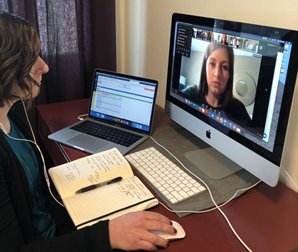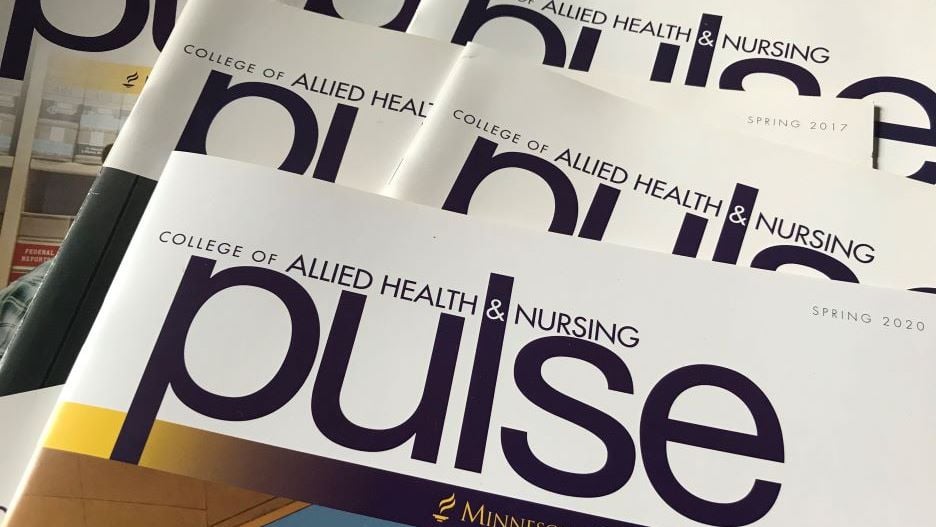Telepractice provides unexpected opportunity for students and community
 |
Student Paige Borreson (on computer screen) connects with faculty and clients using telepractice. |
Like many students in the College of Allied Health and Nursing, Paige Borreson receives real-world experience by working directly with patients to fulfill necessary hours to complete her classes.
So, when the pandemic shut everything down, she was nervous. Borreson wondered how she would get her clinical hours in and was concerned about the clients she had just started working with in-person.
The first-year graduate student in Communication Sciences & Disorders said at first the entire situation was daunting. “The shutdown certainly wasn’t part of the plan,” Borreson said. “I thought maybe it would be a temporary pause and didn’t think it would last as long as it did.”
But, thanks to Minnesota State University, Mankato’s early investments in state-of-the art equipment and technology, Borreson was able to use telepractice to both fulfill her classroom hours and continue to meet the needs of the clients she and faculty were working with.
Telepractice—the use of technology to deliver speech language pathology and audiology services by linking client and clinician for assessments, interventions or consultations — allowed Borreson and her peers to continue providing social skills groups to children with autism, literacy activities for elementary kids and therapy for adults who have suffered stroke or brain damage.
Kate Glogowski, director of the Center for Communication Sciences & Disorders and clinical internship coordinator, said increasing the use of telepractice had been anticipated, but COVID-19 put everything into fast-forward.
“Getting telepractice up and running on an emergency basis was a huge shift for everyone,” Glogowski said. “Ideally, we may not have done it so fast, but we had to keep our students moving toward their goals.”
Originally overwhelmed with switching from working with clients face-to-face to using telepractice in a short timeframe, Borreson credits faculty for encouraging her to remain focused on the goal: determining appropriate intervention activities for the clients.
“Without easy access to materials, I had to get creative,” Borreson said. “There was some trial and error, but it forced me think more about each session with clients and the techniques I use, research activities and prove they are effective in working with clients.”
As the semester progressed, Borreson enjoyed using telepractice. Despite the challenges, the entire experience will benefit her both in her upcoming classes as well as when she graduates.
“Through all of this, I was able to quickly adapt, evaluate myself, make adjustments and apply that,” Borreson said. “I’m proud of myself, my peers and the faculty who have been involved in the intricacies of how to continue to deliver services.”



